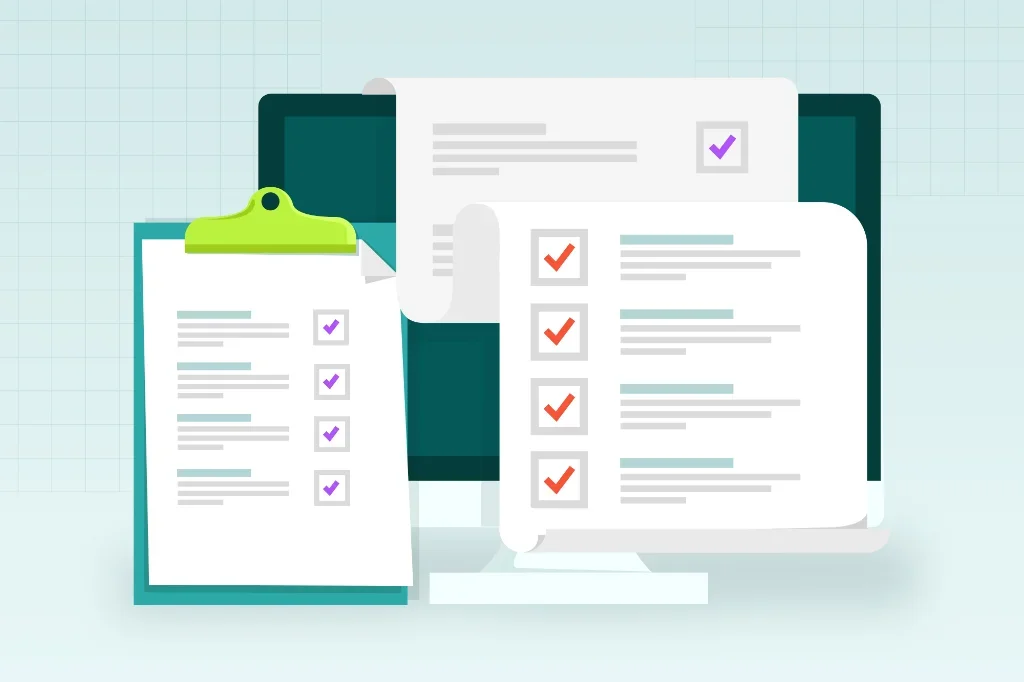Transform your developer portfolio into a living digital product. Learn how to apply UX design, analytics insights, and agile thinking to elevate your brand and attract clients.

Introduction: Why Your Portfolio is a Product
Developer Portfolio as a Product is the new mantra for 2025. Gone are the days of static, one-time portfolio websites. Today, your portfolio is a living digital product — designed, tested, and refined continuously. It’s a platform that communicates your skills, professionalism, and creativity while adapting to audience behavior.
-
Introduction: Why Your Portfolio is a Product
-
The New Definition of a Developer Portfolio
-
Adopting the Product Mindset
-
Applying UX Principles to Your Portfolio
-
Leveraging Analytics for Continuous Improvement
-
A/B Testing for Portfolio Optimization
-
Agile Thinking: Iteration as a Lifestyle
-
Portfolio Maintenance as a Growth Discipline
-
Becoming the Product Owner of Your Brand
-
The Aesthetic of Iteration: Design with Purpose
-
Conclusion: Your Portfolio as a Living Product
In today’s digital economy, a web developer portfolio has evolved far beyond a static gallery of past work. It has become a living product — an ecosystem that demands as much strategy, iteration, and intelligence as the applications it showcases.
The best developers no longer treat their portfolios as mere résumé extensions; they treat them as digital products — guided by user experience (UX) design, analytics-driven decisions, and agile methodologies. This mindset transforms the traditional “personal website” into an adaptive, growth-oriented platform that communicates professionalism, innovation, and trust.
In this new era of digital craftsmanship, your portfolio isn’t something you build once and leave behind — it’s something you ship, test, refine, and relaunch, again and again.
I. The New Definition of a Developer Portfolio
A decade ago, a developer’s portfolio served one function: to display code samples and client projects. It was proof of competence. But in 2025, the bar has risen.
Your portfolio is now your digital persona, your brand ambassador, and your 24/7 marketing engine. It speaks long before you do — and its performance, usability, and authenticity define how potential clients or employers perceive your technical expertise.
A truly modern developer portfolio is:
- Dynamic, not static — regularly updated with fresh content, live project data, and evolving narratives.
- User-centered, not self-centered — designed with the visitor’s journey in mind, not just your own vanity metrics.
- Data-informed, not assumption-driven — using analytics, A/B testing, and real-time engagement feedback to evolve intelligently.
- Iterative, not final — continuously improved like any digital product through agile sprints and user insights.
To build a great product, you don’t just code — you listen, measure, and improve. The same logic applies to building your portfolio.
II. The Product Mindset: Seeing Your Portfolio Like a Startup Founder
Imagine your portfolio as your minimum viable product (MVP) — the first version of your brand you ship to the public. It’s functional, purposeful, and positioned to evolve.
Adopting a product mindset means treating your personal brand with the same seriousness that startups give to their flagship applications. You develop hypotheses about what your audience values, test your assumptions through data, and iterate based on measurable outcomes.
Ask yourself:
- Does my portfolio load fast, feel intuitive, and look credible?
- Are users engaging with my work samples or bouncing off too early?
- Which sections or visuals convert visitors into inquiries or leads?
These questions sound like something a product manager might ask — and that’s exactly the point. The modern developer must be part engineer, part designer, and part strategist.
When you think like a product owner, your portfolio becomes a vehicle for ongoing growth — not just a past record of your achievements, but a predictive tool for your next opportunity.
III. Applying UX Principles to Your Developer Portfolio
User Experience (UX) is the soul of any successful product. In the same way, the UX of your portfolio determines how your story is perceived — and whether it builds trust, curiosity, or indifference.
A UX-driven portfolio design involves:
1. Understanding the User Journey
Your visitors — recruiters, clients, or collaborators — each come with distinct goals. A recruiter might look for clarity and professionalism; a client might look for creativity and execution.
Map these personas and define their journey through your site. What path do you want them to take? What emotion do you want them to feel?
Guide them intuitively — from introduction, to project showcase, to contact — using hierarchy, visual cues, and call-to-action design.
2. Prioritizing Clarity Over Complexity
Many developers fall into the trap of over-designing. But elegance lies in simplicity. Every animation, button, and scroll transition must serve a purpose.
A cluttered portfolio confuses the visitor; a refined one builds authority.
Ask:
- Does every element serve a user goal?
- Is the navigation frictionless and responsive?
- Is the project showcase digestible within seconds?
3. Building Emotional UX
Modern UX design goes beyond usability — it touches emotion. Subtle micro-interactions, ambient motion, or contextual copy can transform a simple project page into a memorable experience.
When visitors feel emotionally aligned with your brand story, they remember you. That emotional resonance turns casual visitors into long-term opportunities.
IV. The Role of Analytics: Listening to Your Portfolio’s Data

Great developers know how to debug their code — but great digital professionals know how to debug their audience.
Data analytics transforms your portfolio from an artistic display into a measurable performance engine. With tools like Google Analytics, Hotjar, or Microsoft Clarity, you can gather behavioral insights that guide your design and content decisions.
1. Using Heatmaps and Session Recordings
Heatmaps visually show where users click, scroll, and linger.
If visitors ignore your “Hire Me” section but spend time on project visuals, you’ve uncovered a signal: your CTA may be misplaced, or your content hierarchy needs adjustment.
Session recordings offer even deeper understanding — allowing you to replay user sessions and spot friction points in real time.
2. Tracking Conversion and Engagement
Every visitor interaction — from time on page to button clicks — tells a story. Define conversion metrics that reflect your goals:
- Portfolio visits that lead to LinkedIn follows
- Inquiry form completions
- Resume downloads or GitHub visits
Use this data to refine your CTAs, improve layout flow, and eliminate dead zones.
3. Leveraging Behavioral Analytics for Personalization
AI-driven analytics platforms now allow personalized portfolio experiences — tailoring content or project recommendations based on visitor profile or location.
This transforms your portfolio from static presentation to intelligent interaction — a hallmark of next-generation digital branding.
V. A/B Testing: The Developer’s Secret to Precision Branding
A/B testing isn’t just for landing pages or SaaS startups — it’s a powerful method for fine-tuning your portfolio’s performance.
Test everything:
- Different CTA placements (“Let’s Collaborate” vs. “Work With Me”)
- Project layout styles (grid vs. carousel)
- Color palettes and typography
- Copy tone — technical vs. conversational
Each test brings you closer to understanding how your audience responds.
Even subtle design or copy adjustments can dramatically affect engagement rates.
For instance, a developer who switched from “Projects” to “My Work in Action” saw a 20% increase in time-on-page — because the new heading evoked curiosity, not just information.
Treat every iteration as an experiment in communication. Your portfolio isn’t only code — it’s persuasion in motion.
VI. Agile Thinking: Iteration as a Lifestyle
Agile is more than a software development methodology; it’s a mindset of continuous evolution. Applying Agile principles to your portfolio development ensures that your brand evolves in harmony with market shifts.
1. Build – Measure – Learn
Start with a functional MVP version of your portfolio. Don’t chase perfection — chase validation. Then measure how people interact with it.
Use the data to inform your next sprint. Update visuals, refine navigation, and iterate regularly. Every change is a micro-release.
2. Feedback Loops
Integrate continuous feedback from real users — peers, mentors, or clients.
You can even automate this by embedding micro-feedback tools that collect quick impressions (“Was this page helpful?”). The goal: never design in isolation.
3. Version Control Your Brand
Just as you use Git for code, document your brand evolution. Track changes in design, tone, and message.
A portfolio that evolves through clear versioning reflects professional maturity and self-awareness.
4. Automation for Efficiency
Use automation tools for content updates — GitHub Actions or headless CMS integrations can keep your portfolio current without manual redeployment.
This creates a seamless, agile environment where your brand updates itself with minimal friction.
VII. Portfolio Maintenance as a Growth Discipline

Maintenance is not glamorous, but it’s essential.
In digital ecosystems, a neglected portfolio signals stagnation. Regular maintenance — technical, visual, and strategic — transforms your portfolio into a growth engine.
1. Technical Maintenance
Keep dependencies, frameworks, and integrations updated.
A portfolio built on outdated code isn’t just risky — it reflects poorly on your professionalism.
Implement continuous deployment pipelines, automated builds, and Lighthouse audits for optimal performance.
2. Content Refresh
Your latest project says more about your evolution than the one you built three years ago.
Schedule quarterly updates — add new work, rewrite case studies, or showcase experiments.
Keep the tone, visuals, and technology stack aligned with current industry standards.
3. SEO and Visibility
A portfolio is useless if no one finds it.
Invest in technical SEO — schema markup, meta descriptions, fast load times — and content SEO through insightful blog posts or case studies.
Organic visibility multiplies the impact of your portfolio’s design excellence.
4. Analytics-Driven Optimization
Use your data insights to plan maintenance sprints.
If your analytics show high bounce rates on certain sections, revisit that UX flow.
Maintenance should always be data-backed, not decorative.
VIII. The Developer as Product Owner: Evolving with Market Trends
When you treat your portfolio as a product, you become more than a coder — you become a strategic product owner of your personal brand.
This shift from “builder” to “owner” unlocks long-term benefits:
- Market adaptability: You can pivot your focus area (e.g., from front-end to AI engineering) by repositioning your content and visuals.
- Consistent engagement: You use data to maintain relevance and keep your audience invested.
- Stronger differentiation: A product-style portfolio stands out because it evolves faster than competitors’ static sites.
In a landscape where first impressions are digital and attention spans are fleeting, agility is your greatest advantage.
IX. The Aesthetic of Iteration: Beauty in Evolution
A portfolio that changes gracefully over time tells a story — the story of growth.
Every iteration, color update, and UX improvement reflects your learning curve and professional evolution.
Designers often talk about “visual maturity” — a look that embodies restraint, clarity, and intention.
Similarly, your evolving portfolio can embody experiential maturity — each update showing deeper empathy, stronger usability, and smarter strategy.
Think of it as digital minimalism with momentum: elegance built through progress.
X. Conclusion: Your Portfolio Is Never Finished — and That’s the Point
In an industry defined by change, the developers who thrive are not those who build once and rest, but those who adapt endlessly.
Treating your portfolio as a product allows you to stay relevant, discoverable, and engaging. You evolve alongside your technology — and your brand becomes a reflection of continuous learning.
Every iteration, every design choice, every analytics insight is a commitment to your personal repository of growth.
The portfolio of tomorrow isn’t a static museum of past work — it’s a living platform of present intelligence and future ambition.
In the end, your portfolio is not just what you show.
It’s what you ship, test, and refine — until it becomes a masterpiece of your professional evolution.


